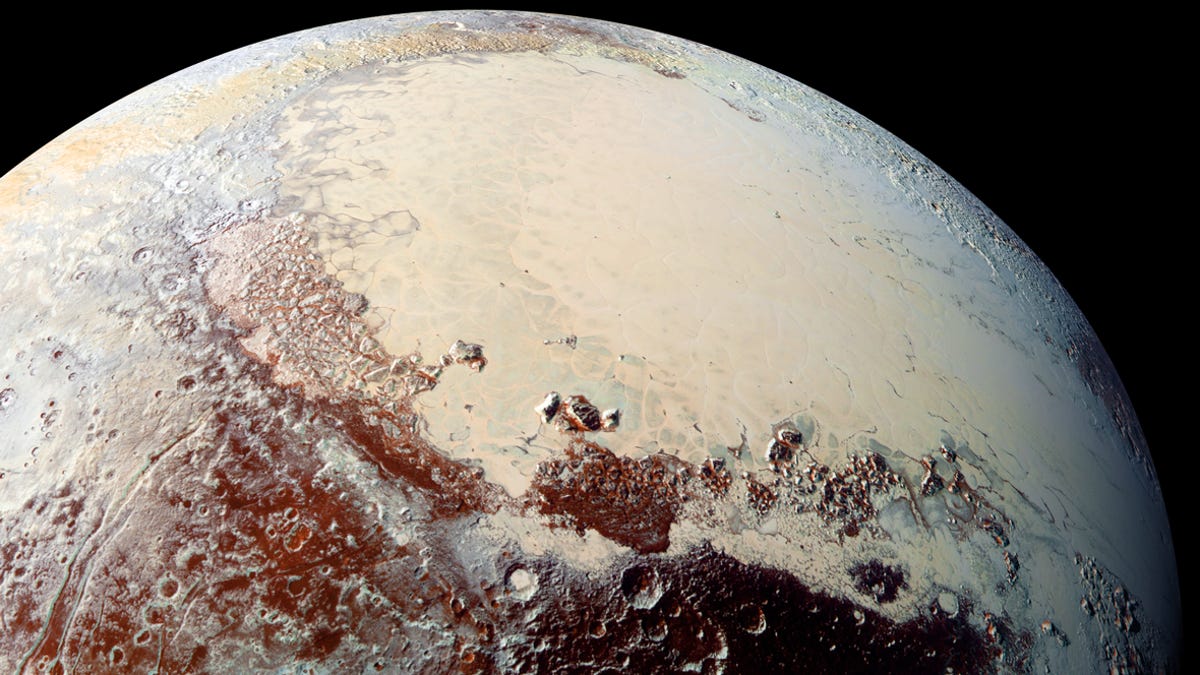Pluto flipped over its own slushy heart
New Horizons revealed a charming heart-shaped region on the dwarf planet. Now it seems Pluto's cold heart may play a key role in its history.

Pluto is cold-hearted, but it might not be frozen solid like we assumed for generations.
New data from NASA's New Horizons mission indicates that an ocean of water and slushy ice lies beneath the heart-shaped Tombaugh Regio feature on the distant dwarf planet.
The notion of a hidden subsurface ocean on Pluto isn't new, but the research published Wednesday in the journal Nature suggests that its chilled heart has been a driving force in shaping the far-off world and its history.
Researchers propose that Sputnik Planitia, a 1,000-kilometer wide basin within the iconic heart-shaped region, came to its present location because a build-up of ice threw Pluto's rotation off kilter enough that the entire thing actually rolled over. They compare the process to a spinning top with a wad of gum stuck to it.
"Each time Pluto goes around the Sun, a bit of nitrogen accumulates in the heart," said University of Arizona doctoral student James Keane, who authored the research, in a release. "Once enough ice has piled up, maybe a hundred meters thick, it starts to overwhelm the planet's shape, which dictates the planet's orientation. And if you have an excess of mass in one spot on the planet, it wants to go to the equator. Eventually, over millions of years, it will drag the whole planet over."
Francis Nimmo, professor of Earth and planetary sciences at UC Santa Cruz and lead author of a second paper on the origins of Sputnik Planitia, suspects the hidden ocean consists mostly of water and another substance like ammonia acting as an antifreeze. The slow refreezing process could also explain the fractures seen on Pluto's surface in New Horizons images.
The findings are just the latest indication from New Horizons that Pluto is much more dynamic and interesting than we thought.
"That the movement of volatiles and shifting ice around a planet could have a dramatic, planet-moving effect is not something anyone would have predicted," Keane said.
If Pluto has been doing planetary gymnastics on a geologic time scale, other objects in the outer solar system may also be behaving in unexpected ways.
"When we look at these other objects, they may be equally interesting, not just frozen snowballs," Nimmo said.

